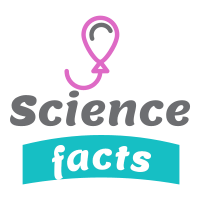Earth is the third planet from the Sun, and the only astronomical object known to harbor life. According to radiometric dating and other sources of evidence, Earth formed over 4.5 billion years ago.Earth's gravity interacts with other objects in space, especially the Sun and the Moon, Earth's only natural satellite. Earth orbits around the Sun in 365.26 days, a period known as an Earth year. During this time, Earth rotates about its axis about 366.26 times.
Earth's axis of rotation is tilted with respect to its orbital plane, producing seasons on Earth. The gravitational interaction between Earth and the Moon causes tides, stabilizes Earth's orientation on its axis, and gradually slows its rotation.Earth is the densest planet in the Solar System and the largest and most massive of the four terrestrial planets.
Earth's lithosphere is divided into several rigid tectonic plates that migrate across the surface over many millions of years. About 71% of Earth's surface is covered with water, mostly by oceans.The remaining 29% is landconsisting of continents and islands that together contain many lakes, rivers and other sources of water that contribute to the hydrosphere. The majority of Earth's polar regions are covered in ice, including the Antarctic ice sheet and the sea ice of the Arctic ice pack. Earth's interior remains active with a solid iron inner core, a liquid outer core that generates the Earth's magnetic field, and a convecting mantle that drives plate tectonics.
Are there other planets like Earth?
No we don't know of any other planets exactly like Earth, with its unique life forms. But Earth has similarities to three other planets orbiting the Sun - Mercury, Venus, and Mars. All four are made of rock and metal, obit close to the Sun, and have relatively hot surfaces. They are known as the terrestrial or rocky planets.
Life on Earth
- Earth is the only place in the Universe where life is known.
- It is home to 1.5 million distinct forms of life and more are being discovered all the time.
- Earth is just far enough away from the sun for liquid water and life to exist. If it were any closer, Earth would be too hot, any furthur away, and it would be too cold.
- More than 70 percent of Earth is covered in water. If the planet was perfectly smooth its surface would be covered with a layer 2.8 km deep.
- Earth has just the right temperature for its water to be liquid. Mercury and Venus are too hot, and their water has evaporated. Most of Mar's water is frozen beneath its surface.
Venus is the easier planet to see in Earth's sky. Look out for it in the east just before sunrise and in the west just after sunset. It looks like a brilliant star, and is nicknamed the "morning star" and "evening star".
01: Venus is named after the Roman goddness of love and beauty.
02: It is surrounded by dense clouds streching up to 80 km (50 miles) above the surface.
03: The clouds are made of dilute sulphuric acid droplets and reflects 80 percent of the sunlight, making Venus overcast.
04: Heat is trapped by the clouds in the same way glass traps heat in a greenhouse.
Venusian volcanoes
Venus has hundreds of volacanoes and about 85 percent of the planet is covered in volcanic lava. The biggest are shallow sheild volcanoes, like those in Hawali on Earth.
name height diameter
Maat Mons 8 km (5 miles) 395 km
Gula Mons 3 km (2 miles) 276 km
Sif Mons 2 km (1.2 miles) 200 km
Sapas Mons 1.5 km (1 mile) 217 km
Fast Facts
Rocky planets
01. The rocky planets were formed about 4.56 billion years ago from a vast cloud of gas and dust that produced the sun and other bodies in the solar system.
02. Material close to the sun clumped together, eventually producing four large balls - the rocky planets.
03. The metal sank to the planets cores and the lighter rock moved to the surface.
04. Overtime, the planets cooled and their different surfaces were formed by meteorite bombardment volcanic activity, water, and movement in their crusts.
"Olympus Mons is the largest volcano on Mars, and in the Solar System. It is 24 km (15 miles) high and 648 km (403 miles) across."
Martian myths
- In the 1870's an italian astronomer was mistranslated, which led people to beleive he had seen canals on Mars built by Martins.
- When a radio version of the H G Welts book War of the Worlds was broadcast in 1938, listeners panicked because they thought they had tuned into a news alert and that Martins had landed on Earth.
- Photographs taken by spacecraft in 1976 seemed to show a 3.2 km (2 miles) long human face on Mars surface . It later proved to be a huge rock formation.
- About 50 years ago, astronomers studying Mars moon phobas concluded it was artifical - a metal hollow sphere made by Martins.
Have a nice day.
















.jpg)


